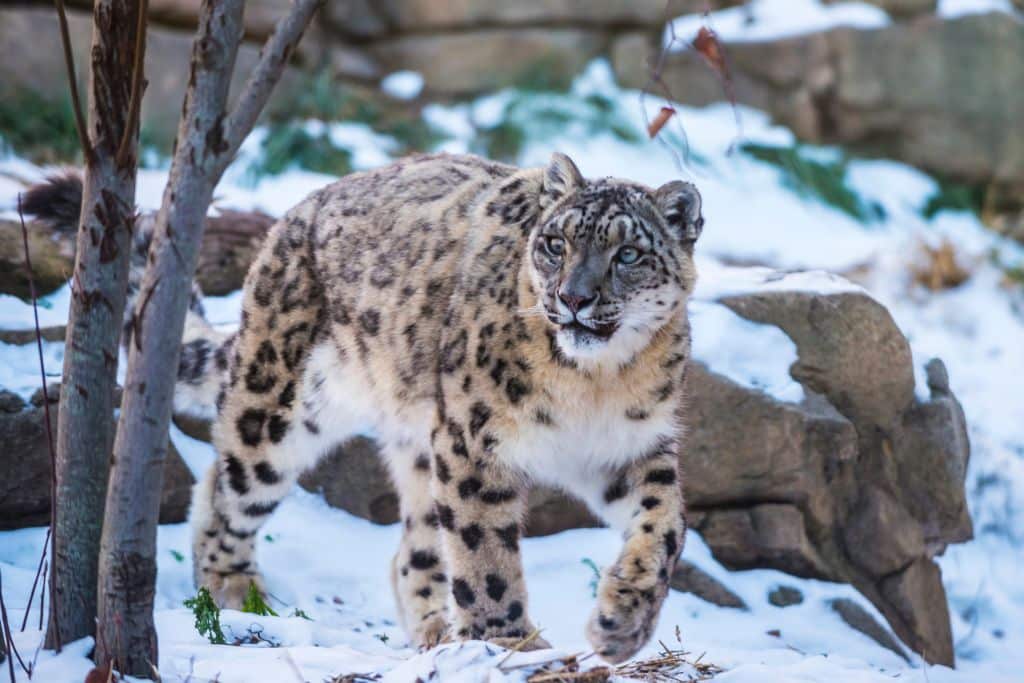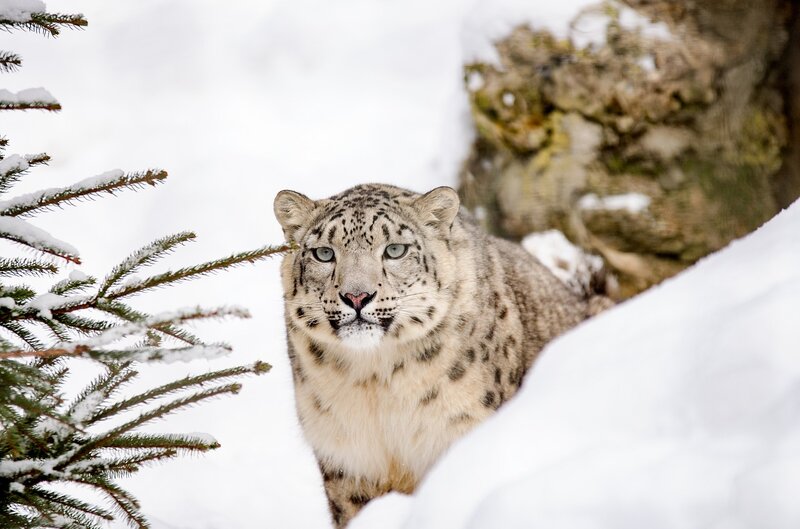Happy International Snow Leopard Day 2023! Established in 2014, on October 23 every year we celebrate this endangered cat and raise awareness for its conservation and protection. While there are many countries and communities committed to protecting this fascinating creature, the snow leopard population is under threat due to shrinking habitats, a declining number of prey, and poaching. A large part of conservation efforts is to raise awareness through education. So here are some facts about the elusive, stunning snow leopard.
—
- Snow leopards are often found in the mountains of Central Asia and have adapted to a cold and dry climate.
- Snow leopards are around 55-65 centimetres in height and 90-115 centimetres in length. They have extra-large paws that are like a natural pair of snowshoes to prevent the cat from sinking into the snow.
- As one of the world’s most elusive cats, they are solitary travellers and are most active during dawn and dusk.
- Despite being quite strong cats, they are incredibly gentle creatures that are not known to harm humans. Snow leopards cannot roar because of the physiology of their throat. They are often heard purring, hissing, or growling in a non-aggressive manner.
- Communication between snow leopards is done through leaving markings by scraping the ground or spraying urine against rocks to mark their territory or to locate mates.
- These cats can kill prey that are three times their own weight. They also have strong limbs that can launch up to 30 feet in one leap.
- A female snow leopard is usually pregnant for 93-110 days before giving birth to her cubs in June or July. The mother tends to raise her offspring alone, providing food and shelter for her cubs. The cubs follow their mothers for the first 18-22 months of their lives, learning how to hunt before becoming independent.
- Snow leopards are important to their ecosystem because as top predators, they maintain the ecological balance by preying on mountain sheep and goats, preventing increases in herbivore populations and changes to the vegetation.
- Many people who live near snow leopard populations rely on resources provided by these landscapes, such as wood for shelter, heat and fuel. Protecting snow leopards would, by extension, protect the local people too.
- Snow leopards are most affected by habitat loss, climate change, human wildlife conflict and the illegal wildlife trade.

Whilst not a lot is known about the snow leopard, one thing is clear – the species population is declining due to “habitat deterioration, poaching, conflict with people” and climate change, says Becci May, a Tigers and Asian Species Regional Manager for WWF. Through rebuilding communities in Nepal after the devastating earthquake in 2015, the WWF has been working with communities in the high mountains of the Kanchenjunga conservation area in Nepal to reduce conflicts between snow leopards and people. Snow leopards sometimes prey on livestock that leads to retaliatory killings. Snow leopards are often poached for their fur and bones for commercial and medicinal purposes and are also under threat from climate change-induced warming.
You might also like: 10 of the World’s Most Endangered Animals in 2023
Celebrating International Snow Leopard Day should encourage us to learn more about this creature and the threats they face, prompting us to rethink the impact of our actions on these cats and the environment in which they live and rely on.

















